43 paper chromatography of leaf pigments lab answers
Chromatography Lab Flashcards | Quizlet To separate pigments using chromatography paper. What is the first this you do? Obtain a capped test tube with chromatography solvent. How much chromatography solvent is in the test tube? 5 ml Should you open the test tube filled with chromatography solvent a lot? No. What do you use to hold it upright once it is obtained? A 250 ml flask. Solved Exercise 3B. Separation of plant pigments by paper - Chegg See the instructions on page 9 of the lab manual. Solvent front 1 Origin (pigment application) 1 A B с 1. Note: A is the pigment closest to the origin. Pigment Pigment color Distance from origin code (mm) А 2 3 B a 4 С 5 D -O = Increasing distance from the origin Origin (pigment application) 1. Note: A is the pigment closest to the origin.
Leaf Chromatography - 406 Words | www2.bartleby.com Leaf Chromatography. 406 Words2 Pages. In this experiment, chromatography pigment papers are used to test the qualitative pigment in mustard leaves. Green extract of mustard leaves are obtain from grinded by mortar. Mustard leaves wash by acetone before grind by mortar. Acetone is a good solvent for extracting these non-polar pigments from the ...
Paper chromatography of leaf pigments lab answers
Paper Chromatography of Pigments in a Spinach Leaf Paper Chromatography of Pigments in a Spinach Leaf INTRODUCTION Colored molecules or pigments often occur as mixtures in nature. An example is the spinach leaf, which appears dark green, but is actually a mixture of several pigments of different color. In order to identify the individual pigments, chemists use a technique known as Leaf chromatography | Experiment | RSC Education Most leaves are green due to chlorophyll. This substance is important in photosynthesis (the process by which plants make their food). In this experiment, students investigate the different pigments present in a leaf, from chlorophyll to carotenes, using paper chromatography. Leaf Chromatography Experiment - Easy Paper Chromatography Paper chromatography is a separation technique. When applied to leaves, it separates the pigment molecules mostly according to their size. The main pigment molecule in green leaves is chlorophyll, which performs photosynthesis in the plant. Other pigments also occur, such as carotenoids and anthocyanins.
Paper chromatography of leaf pigments lab answers. Chromatography of Leaf Pigments Flashcards | Quizlet Study with Quizlet and memorize flashcards containing terms like What is chromatography used for?, Give two types of chromatography, What is the mobile phase? and more. Paper Chromatography of Plant Pigments - Lab Manual for Biology 2e Part ... Paper Chromatography of Plant Pigments Learning Objectives After completing the lab, the student will be able to: Extract pigments from plant material; Separate pigments by paper chromatography; Measure R f (retention factor) values for pigments. Activity 2: Pre-Assessment The leaves of some plants change color in fall. 2: Paper Chromatography of Gel Ink Pens (Experiment) To obtain a paper chromatogram of various gel inks To identify components of inks by calculating R f values Chromatography is a method of physically separating mixtures into its individual components. It is a common laboratory technique used to identify unknown components in mixtures. PDF {EBOOK} Paper Chromatography Lab Questions And Answers Right here, we have countless ebook Paper Chromatography Lab Questions And Answers and collections to check out. We additionally come up with the money for variant types and moreover type of the books to browse. The okay book, fiction, history, novel, scientific research, as with ease as various additional sorts of books are readily handy here.
LAB 7- Chromatography - Lab report - Experiment #7 ... - Studocu LAB 7- Chromatography - Lab report - Experiment #7: Chromatography Simran Sharda CHM 1004 ETX[41725] - Studocu Lab report experiment chromatography simran sharda dr. olga lavinda chm 1004 october 27, 2019 chromatography is an analytical technique commonly used for Skip to document Ask an Expert Sign inRegister Sign inRegister Home Ask an ExpertNew PDF LAB: Plant Pigment Chromatography - West Linn-Wilsonville School District paper. Many green leaves contain pigment colors that are not seen until autumn because they are hidden by the chlorophyll. A few plants have leaves that are red, orange, or yellow all year long. In this investigation, you will use paper chromatography to determine what differences exist in the plant pigments of various colors of leaves. You ... Find the Hidden Colors of Leaves | STEM Activity - Science Buddies Although a leaf is a mixture of these pigments, you can separate the colors using a method called paper chromatography. In this method, a mixture (such as your pigment mixture) is applied onto a chromatography paper. The paper strip is dipped into a liquid, called the solvent or mobile phase. Paper chromatography - lab report - Studocu Paper chromatography - lab report lab report University Augusta University Course Organic Chemistry II (CHEM 3412) Academic year:2021/2022 Helpful? 225 Comments Please sign inor registerto post comments. Students also viewed Soap - Lab report Experiment 6 - Synthesis of t Pentyl Chloride r15eio Cannizzaro - lab report 04 acetal 367 131 - lab report
Separation Of Plant Pigments Through Paper Chromatography - BYJU'S Mechanism of Paper Chromatography In this technique, the interaction between three components is involved - solid phase, separation of a mixture and a solvent. At first, the mixture is spotted onto the paper and is dried. The solvent is made to flow through the capillary attraction. Lab report photosynthetic pigments paper chromatography - cord01 ... Lab report photosynthetic pigments paper chromatography by cord01.arcusapp.globalscape.com . Example; FlipHTML5. Plant Pigment Paper Chromatography - CISER Pages 1-17 - Flip PDF Download | FlipHTML5 ... Photosynthesis - photosynthetic pigments - LAB 4 Date: 9/16/ Title: Photosynthesis- Photosynthetic - Studocu ... PDF Plant Pigment Paper Chromatography - Texas Tech University In paper chromatography, paper marked with an unknown, such as plant extract, is placed in a developing chamber with a specified solvent. The solvent carries the dissolved pigments as it moves up the paper. The pigments are carried at different rates because they are not equally soluble. A pigment that is the most soluble will travel the greatest PDF ANALYSIS OF PLANT PIGMENTS USING PAPER CHROMATOGRAPHY - Purdue University 1. Cut a piece of Whatman #1 filter paper or chromatography paper to the dimensions of 12 cm X 14 cm. Edges must be straight. 2. With a pencil lightly make a line 1.5 - 2 cm from the bottom edge of the paper which measures 14 cm. 3. Select 2 large dark green spinach leaves and blot dry with paper towels. Place a leaf over the
Photosynthesis-lab2022InPerson 1 .pdf - Pigments and... Fold the paper lengthwise to form a crease in the paper. This will help reinforce the rigidity of the paper. 2. Obtain a fresh magnolia leaf from the side counter. 3. Place the leaf boaom-side down on the chromatography paper. 4. Place a ruler parallel to the boaom of the chromatography paper on top of the magnolia leaf.
DOC Plant Pigments/Chromatography Lab - Ms Dalby's Website 3. Use a quarter to extract the pigments from spinach leaf cells. Place a small section of leaf on the . top. of the pencil line. Use the ribbed edge of the coin to crush the leaf cells. Be sure the pigment line is on top of the pencil line. Use a back and forth movement exerting firm pressure through out. 4. Place the chromatography paper in ...
Lab 4 Plant Pigments - BIOLOGY JUNCTION Lab 4 Plant Pigments. The purpose of this lab experiment was to separate plant pigments using paper chromatography, and to measure the rate of photosynthesis in isolated chloroplasts. Because of capillary action the solvent moves up the paper causing the pigments to become visible at certain distances. The substances visible on the paper are ...
Experiment_726_Paper Chromatography_1_2_1 - Chemistry LibreTexts To perform paper chromatography to separate components of a mixture, there are several steps. First, the mixture that is to be separated is dissolved (if it is not already in liquid form.) Then, a small drop of the solution is applied to a piece of special chromatography paper, which is a porous paper similar to filter paper.
Leaf Chromatography Experiment | HST Learning Center Leaves contain different pigments, which give them their color. Green chlorophyll is the most common type of pigment, but there are also carotenoids (yellow, orange) and anthocyanins (red). Chlorophyll, which is essential for photosynthesis, usually hides the other pigments, except when autumn comes along and it begins to break down.
Plant chromatography experiment. Separation of Plant Pigments by Paper ... Chromatography Lab Answers. Finally, the groups could have put different amounts of black ink on the filter paper. The purpose of the experiment is to determine the specific types of pigments found in a beet leaf and in a spinach leaf by using paper chromatography and two solvents: water soluble solvent and lipid soluble solvent.
Chromatography Lab Answers | SchoolWorkHelper Chromatography Lab Answers You are here: Home Science Chromatography Lab Answers Purpose The purpose of the experiment is to determine the specific types of pigments found in a beet leaf and in a spinach leaf by using paper chromatography and two solvents: water soluble solvent and lipid soluble solvent. Hypothesis
Make Paper Chromatography With Leaves - ThoughtCo Chromatography is a chemical purification method that separates colored substances. In paper chromatography, pigments may be separated based on the different size of the molecules. Everyone knows leaves contain chlorophyll, which is green, but plants actually contain a wide range of other pigment molecules.
Paper Chromatography of Leaf Pigments.docx - Taylor... Nicole Gerlach 15 September 2017 Paper Chromatography of Leaf Pigments Introduction: 1. Chlorophyll: Chlorophyll will reflect the color green. (500-560nm) - it also absorbs red and blue light (650-780nm and 445-510nm). 2. Carotene: Carotene will reflect a red/orange color. (570-650nm)- it also absorbs light in the blue-violent region (400-475nm).
Separation of Plant Pigments by Paper Chromatography In paper chromatography, the coloured bands separate on the absorbent paper. Chlorophylls, anthocyanins, carotenoids, and betalains are the four plant pigments. This post discusses the steps of separating plant pigments through paper chromatography. Also, you will get to know the observation table and the calculation of the Rf value.
Leaf Chromatography Lab - 870 Words | www2.bartleby.com Paper Chromatography Lab Report 1009 Words | 5 Pages. Biology Report 6 Name : Tan Mei Jing Student No. : 2017141025 Subject : Paper Chromatography Group : 2 Date of Experiment : 31/10/2017 Date of Submission : 2/11/2017 Objectives To understand the principle and mechanism of paper chromatography.
Lab7 Chromatography.docx - Lab 7: Paper Chromatography of Leaf ... Lab 7: Paper Chromatography of Leaf Pigments Grading: Virtual Lab is worth 50 points. Total of 8 questions worth 50 points. Submission instructions If an assignment is submitted incorrectly, you will be contacted and the assignment will not be graded unless resubmitted properly. Late penalties may apply. Type your answers and copy all pictures directly into this Word document.
Colour, chlorophyll and chromatography - Science in School Chlorophylls are the pigments primarily responsible for photosynthesis. They absorb red and blue light, and reflect green light, which is what gives leaves their green colour. Carotenoids, on the other hand, reflect yellow, orange and red - the colour of leaves during autumn. During this time of year, chlorophyll breaks down so the carotenoid ...
Lab 4A: Plant Pigment Chromatography Flashcards | Quizlet Place the chromatography paper in the cylinder so the pointed end just touches the _______. Make sure the pigment is not in the solvent. 1, evaporates 6. Stopper the cylinder and wait until the solvent is approximately _ cm from the top of the paper. Remove the chromatography paper and mark the solvent front before it __________.
Leaf Chromatography Experiment - Easy Paper Chromatography Paper chromatography is a separation technique. When applied to leaves, it separates the pigment molecules mostly according to their size. The main pigment molecule in green leaves is chlorophyll, which performs photosynthesis in the plant. Other pigments also occur, such as carotenoids and anthocyanins.
Leaf chromatography | Experiment | RSC Education Most leaves are green due to chlorophyll. This substance is important in photosynthesis (the process by which plants make their food). In this experiment, students investigate the different pigments present in a leaf, from chlorophyll to carotenes, using paper chromatography.
Paper Chromatography of Pigments in a Spinach Leaf Paper Chromatography of Pigments in a Spinach Leaf INTRODUCTION Colored molecules or pigments often occur as mixtures in nature. An example is the spinach leaf, which appears dark green, but is actually a mixture of several pigments of different color. In order to identify the individual pigments, chemists use a technique known as


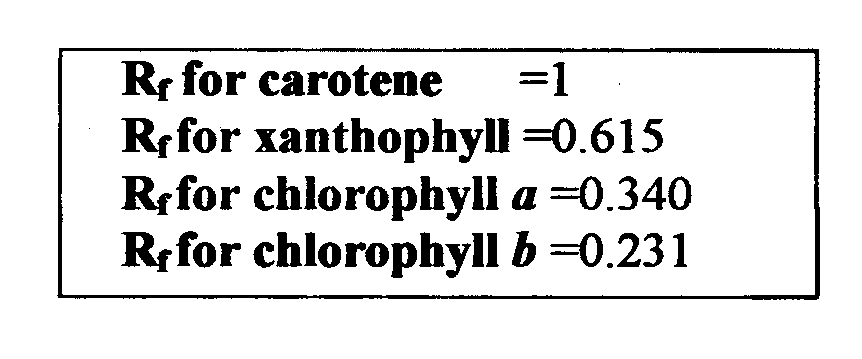
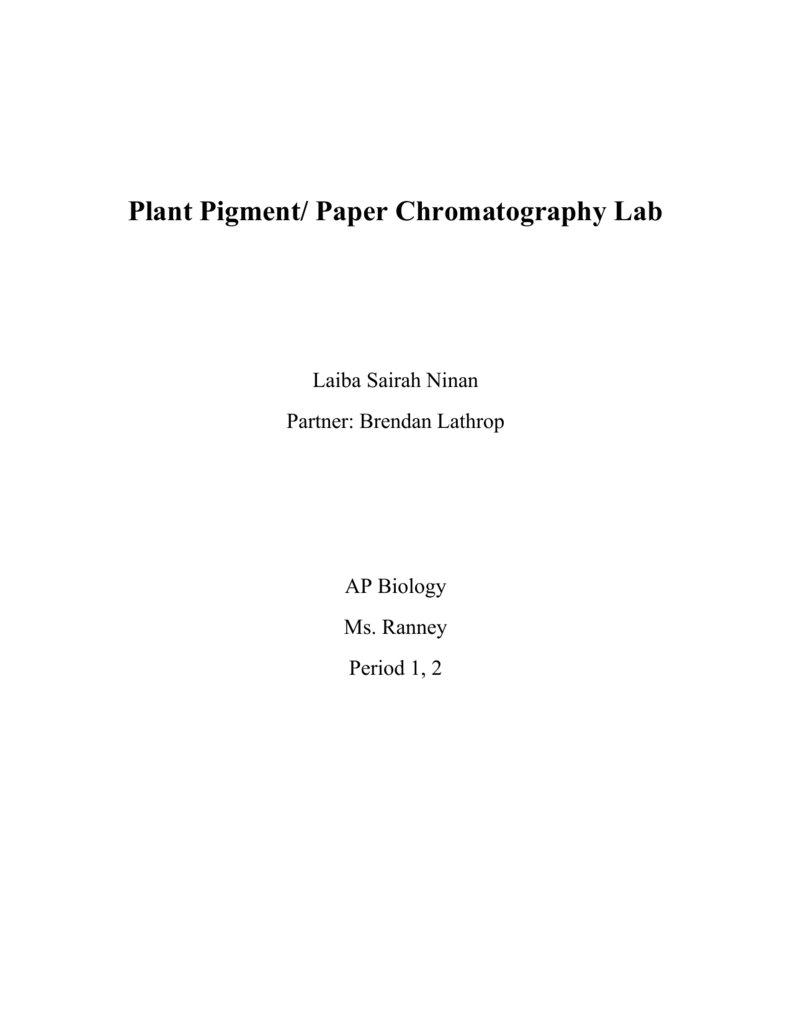

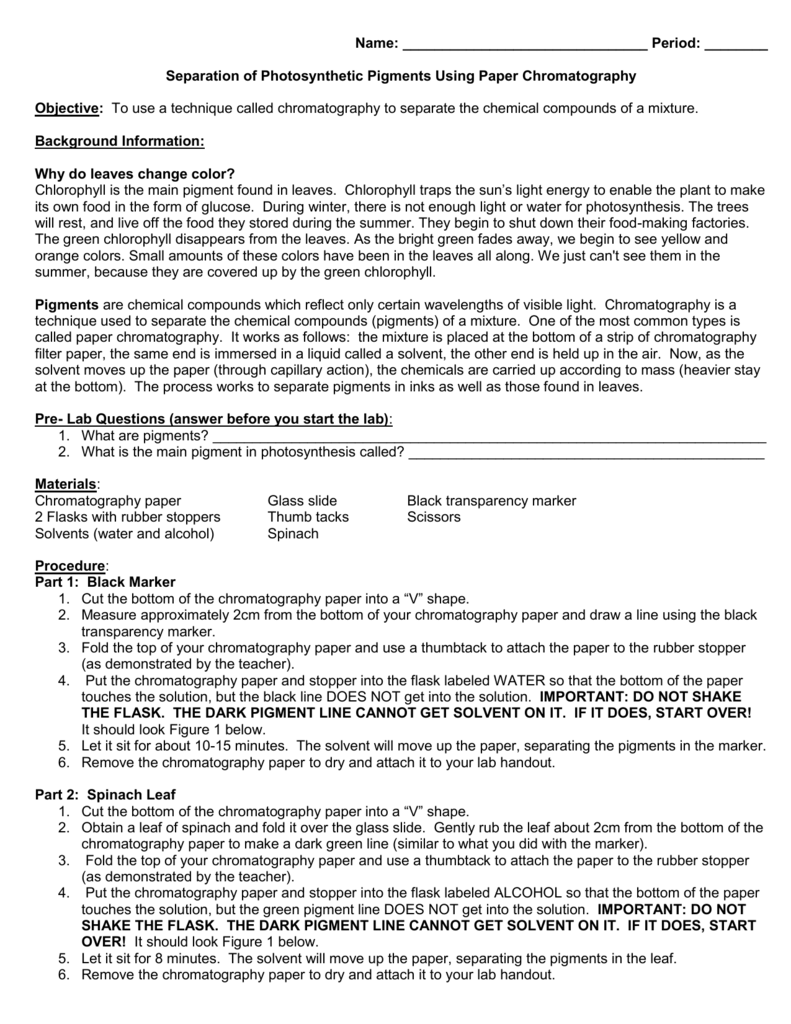
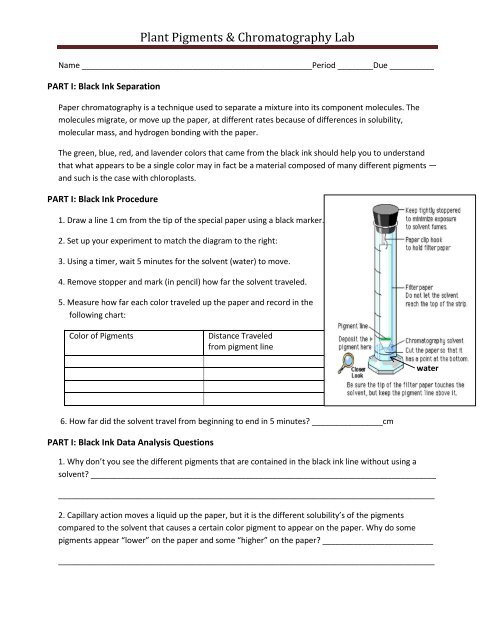
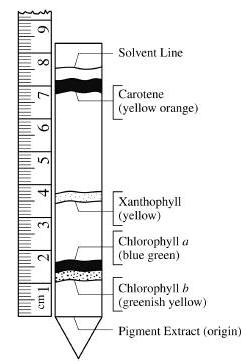
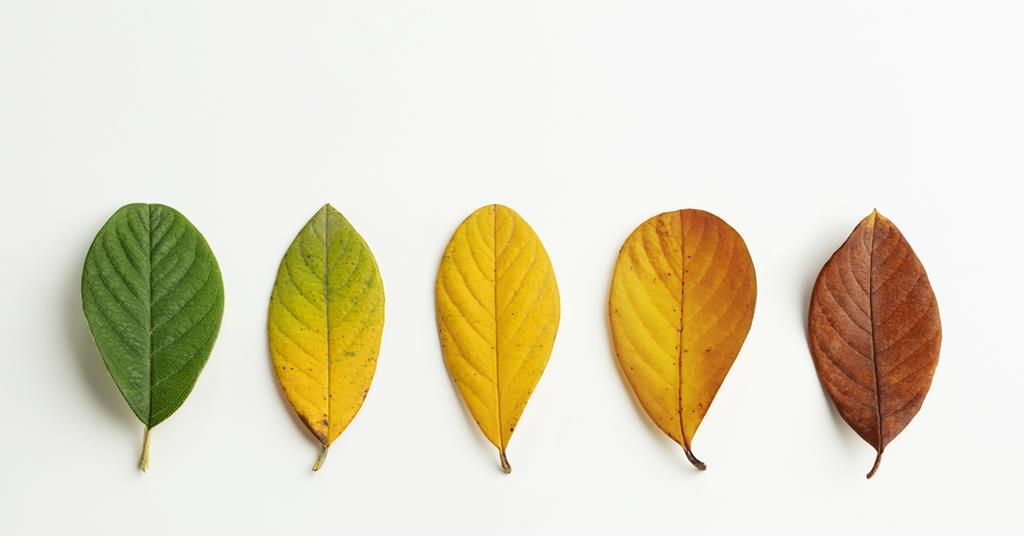
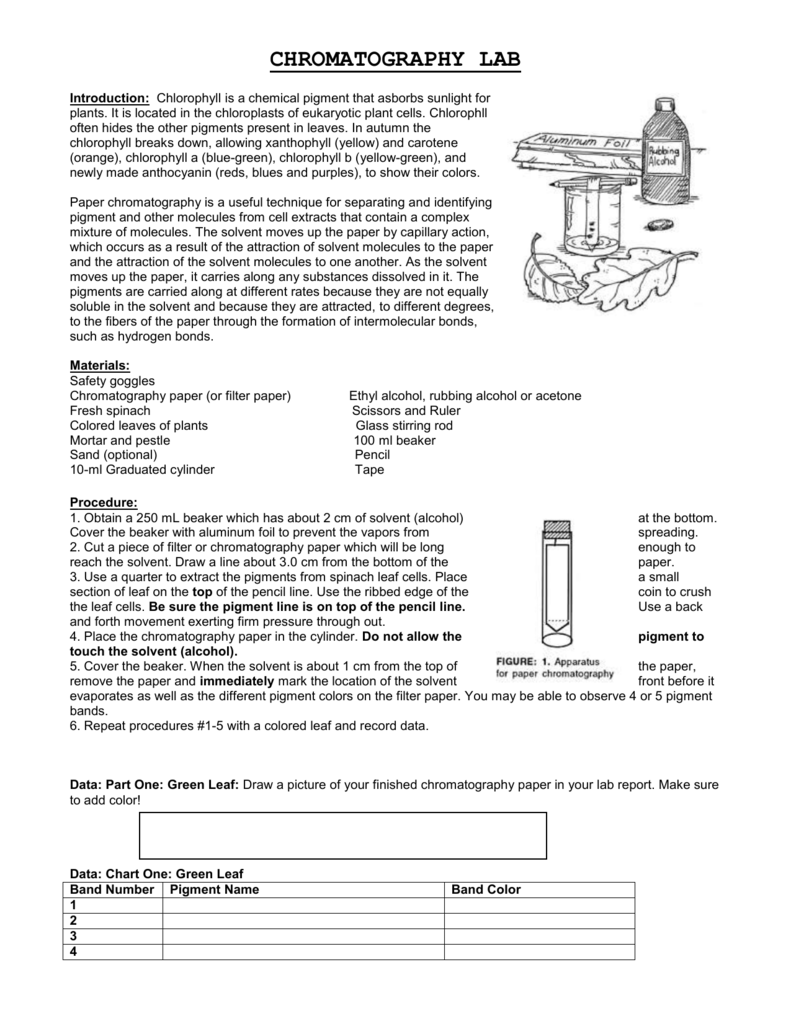
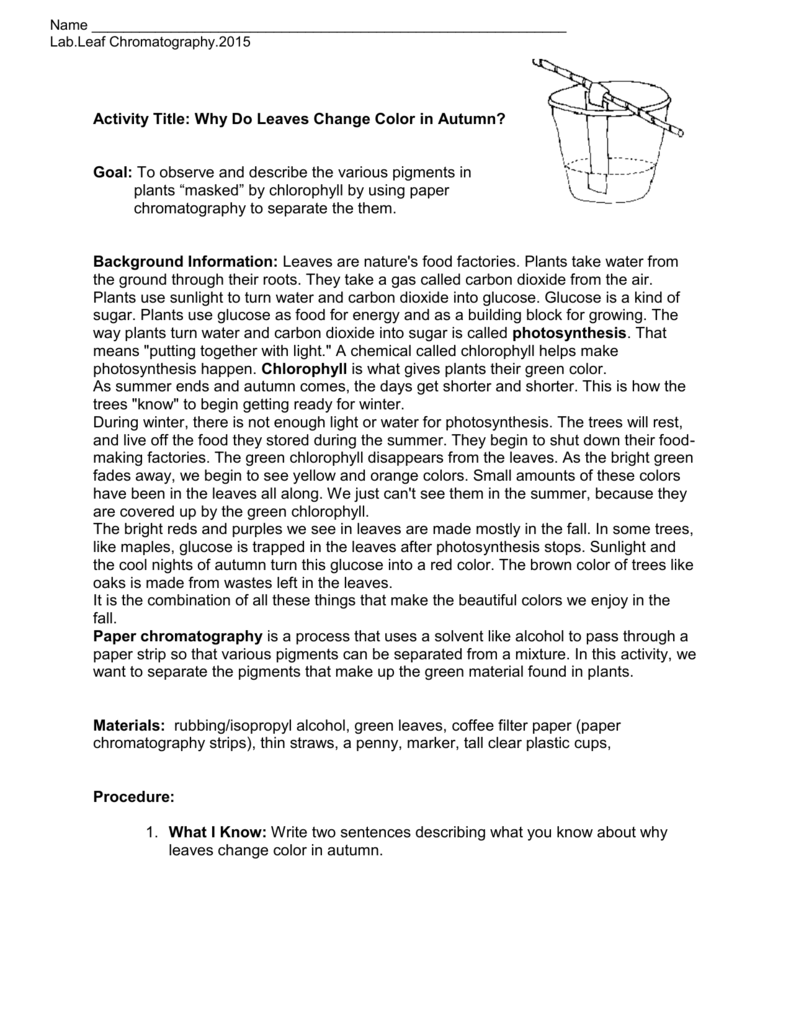


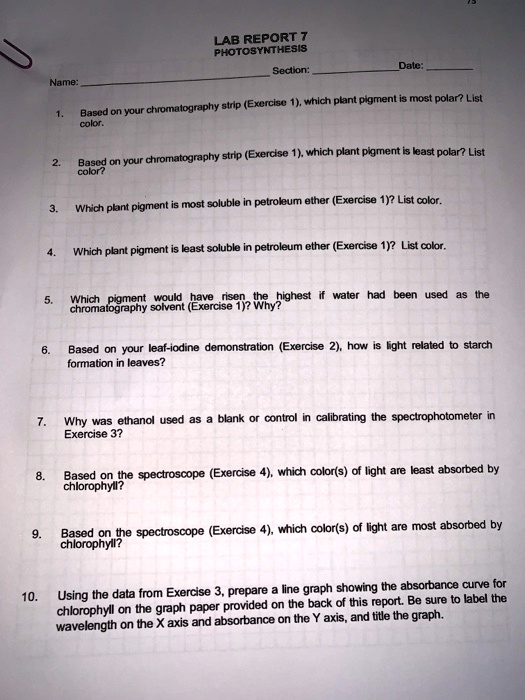
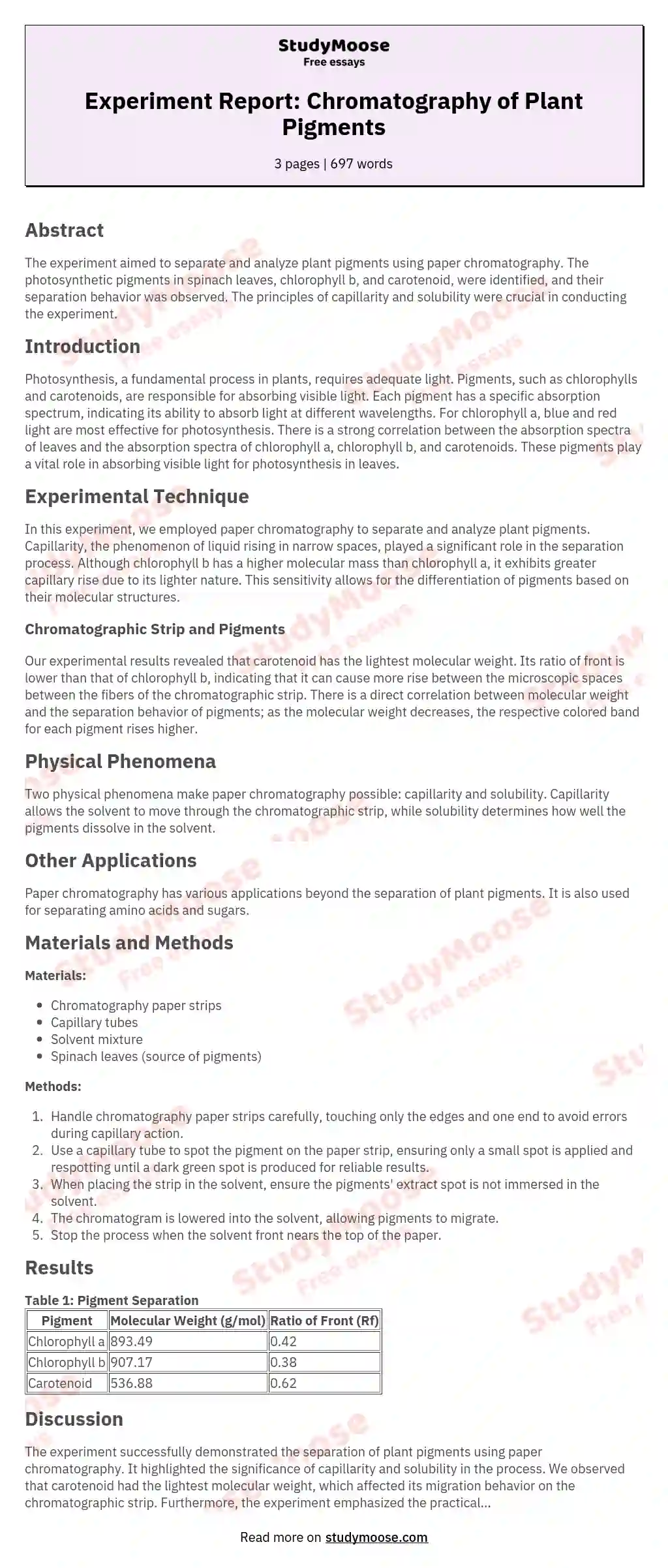
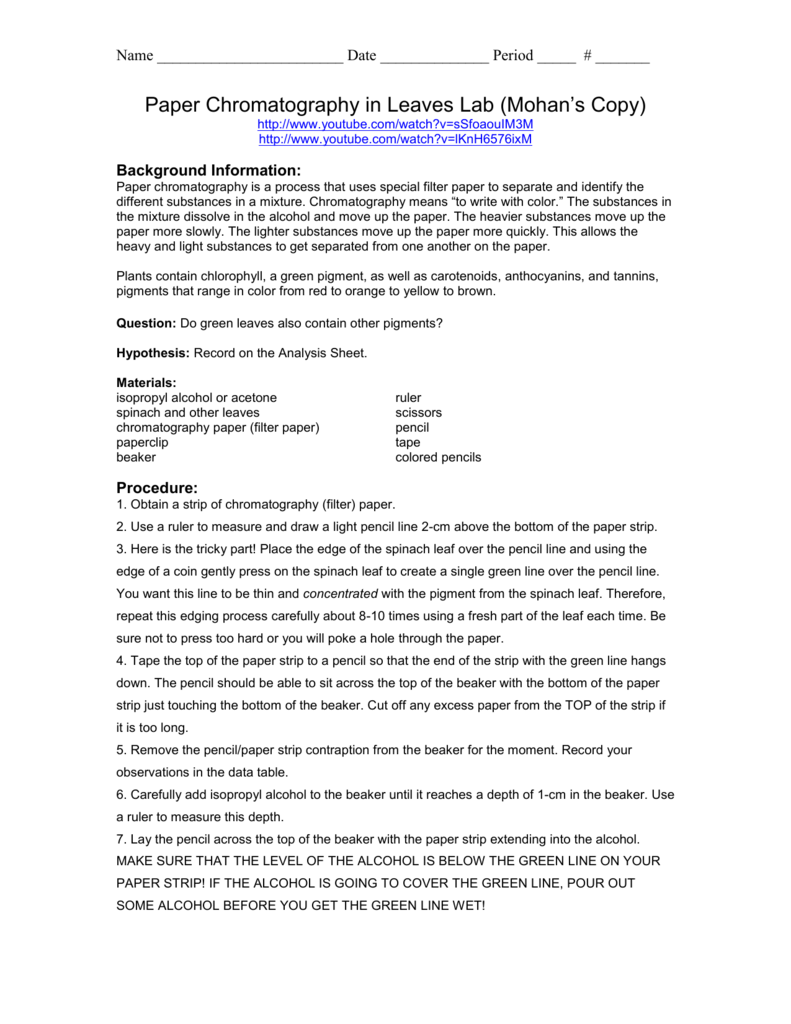


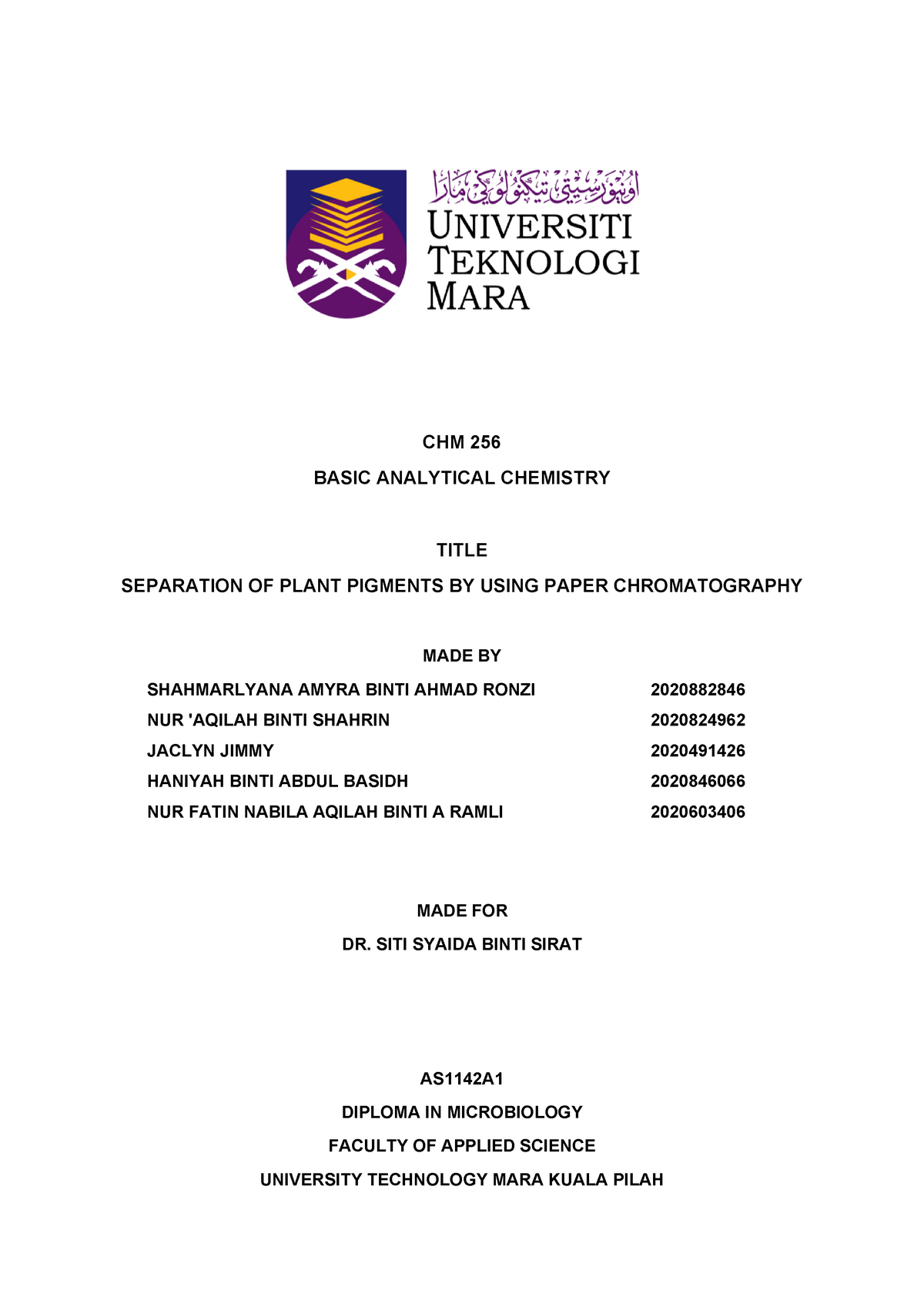


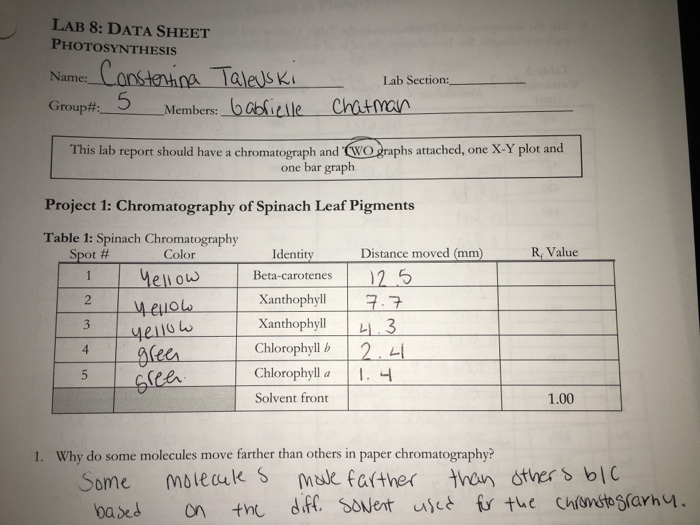


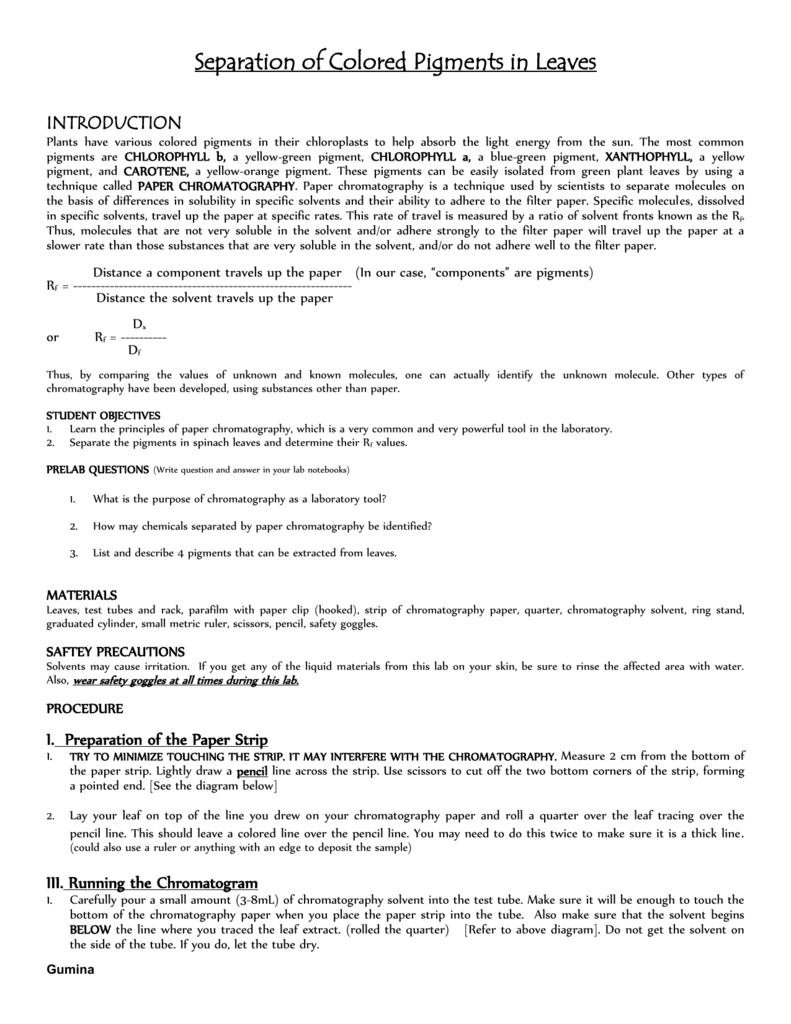
![SOLVED: Activity ] Paper chromatography Some plants that are ...](https://cdn.numerade.com/ask_images/99629d8ba8db4d7e8c9bd974834ed3be.jpg)
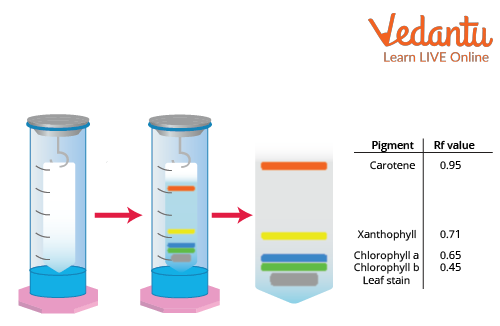
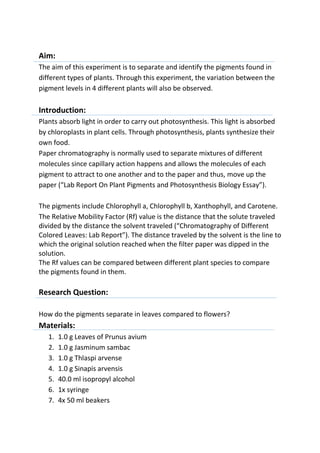
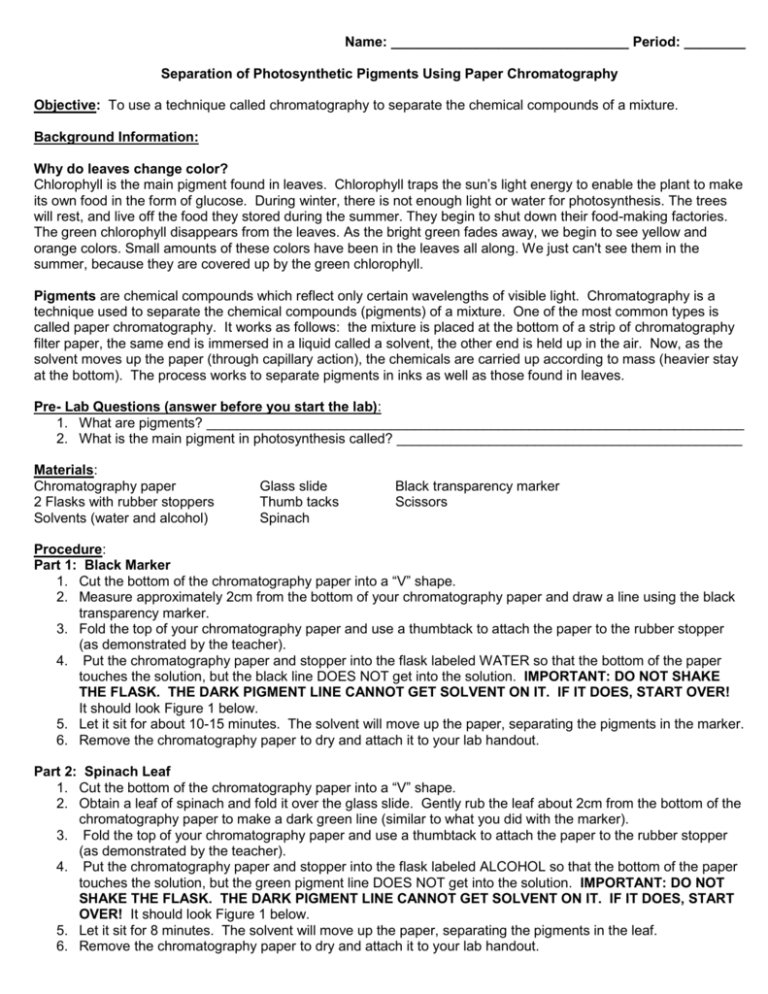
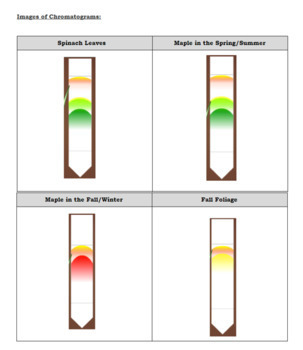
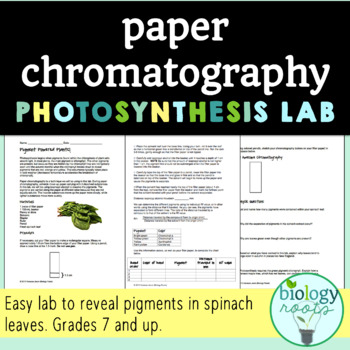

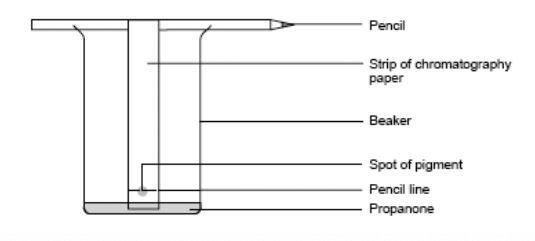
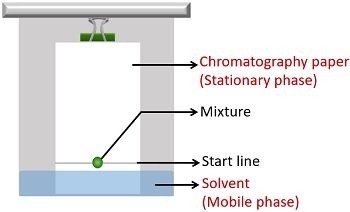

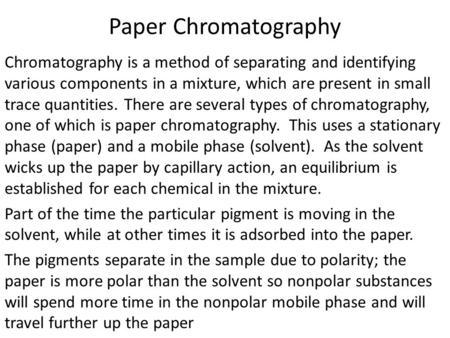
0 Response to "43 paper chromatography of leaf pigments lab answers"
Post a Comment